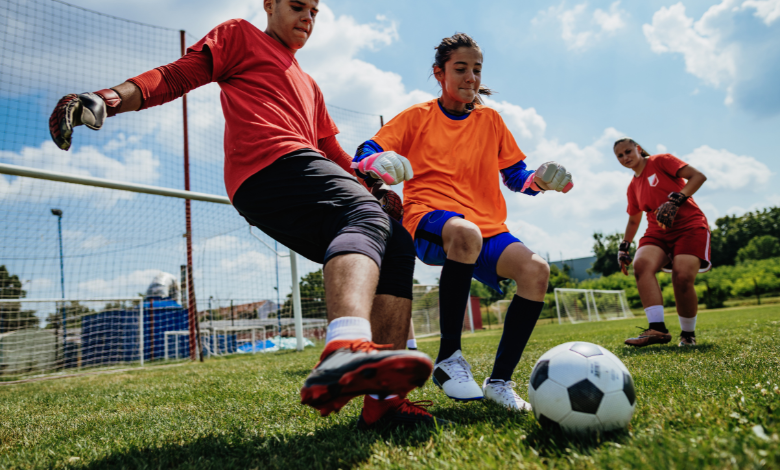What is soccer penalty for coughing ?

In the world of soccer, new rules and regulations are always a topic of heated debate. Among the latest and most controversial is the penalty for coughing. With health concerns taking center stage globally, understanding this rule is crucial for players, coaches, and fans alike. This blog post will explore the implications of this new rule, its impact on the game, and what the soccer community needs to know.
The Rise of Health Protocols in Soccer
The pandemic has changed the way sports operate. Health and safety measures have become a priority, with new rules implemented to protect players and officials. Soccer, being a contact sport, has had to adapt rapidly. One of the most significant changes is the introduction of penalties for coughing, aimed at reducing the risk of virus transmission on the field.
Understanding the New Rule
The International Football Association Board (IFAB), the body responsible for governing the laws of the game, has introduced a rule penalizing intentional coughing. This rule applies in situations where a player deliberately coughs on an opponent or referee. It’s seen as akin to unsportsmanlike behavior, warranting a yellow card or even a red card in severe cases.
The Rationale Behind the Rule
Health experts have emphasized the importance of minimizing respiratory droplets’ spread, which are a primary transmission mode for viruses like soccer penalty for coughing COVID-19. By penalizing deliberate coughing, soccer authorities aim to enforce better hygiene practices and ensure the safety of everyone on the field. This rule also serves as a deterrent against using coughing as a form of gamesmanship to distract or intimidate opponents.
How it Impacts the Game
This new rule adds another layer of responsibility for players. They must now be cautious not only with their physical actions but also with behaviors that could pose health risks. Coaches will need to educate their players about the seriousness of this rule and ensure they adhere to it, thereby maintaining the integrity of the sport.
The Fine Line Between Intentional and Unintentional
One of the critical challenges with this rule is distinguishing between intentional and unintentional coughing. How do referees make this judgment call? The context and manner in which the cough occurs play a significant role in decision-making.
Referee’s Discretion
Referees are trained to observe the nuances of player behavior. They must assess whether a cough is a deliberate act aimed at another person or a natural soccer penalty for coughing response to a stimulus. This level of scrutiny requires referees to be highly observant and fair in their judgments, ensuring that players are not unfairly penalized for involuntary actions.
Appeals and Controversies
Given the subjective nature of this rule, it’s likely to spark controversies. Players and teams may appeal decisions they perceive as unjust, leading to potential disputes. The governing bodies will need to have clear guidelines and appeal processes to handle such cases effectively.
Impact on Player Conduct
With this rule in place, players must be more mindful of their conduct. They need to avoid any behavior that could be construed as intentionally harmful. This heightened awareness can lead to a more disciplined and respectful approach to the game, benefiting everyone involved.
Training and Education for Compliance
To ensure the successful implementation of this rule, comprehensive training and education programs are essential. Both players and coaches need to be well-informed about the specifics of the rule and the reasoning behind it.
Workshops and Seminars
Organizing workshops and seminars can be an effective way to educate soccer teams about the new rule. Experts can explain the health implications of coughing and the importance of adhering to safety protocols. Interactive sessions can help players understand the rule better and clarify any doubts they might have.
Incorporating into Practice
Coaches can incorporate lessons about the new rule into regular practice sessions. By simulating game scenarios where the rule might apply, players can learn to adapt their behavior accordingly. This practical approach can reinforce the theoretical knowledge gained from workshops.
Continuous Monitoring and Feedback
Regular monitoring and feedback are crucial for ensuring compliance. Coaches and team officials should observe players’ behavior during practice and matches, offering constructive feedback to help them align with the new rule. This ongoing process can foster a culture of responsibility and safety within the team.
The Broader Impact on Sportsmanship
The introduction of penalties for coughing soccer penalty for coughing has broader implications for sportsmanship in soccer. It emphasizes the importance of respect and consideration for others, both on and off the field.
Promoting Respect
By penalizing deliberate coughing, the rule promotes a culture of respect among players. It sends a clear message that actions endangering others’ health are unacceptable. This principle aligns with the broader values of sportsmanship, encouraging players to compete fairly and responsibly.
Enhancing the Game’s Integrity
Maintaining the game’s integrity is paramount. Rules like this one ensure that soccer remains a safe and enjoyable sport for all participants. Upholding high standards of conduct helps preserve the essence of the game, where skill and teamwork take precedence over unsportsmanlike behavior.
Setting a Precedent
Soccer’s adoption of this rule sets a precedent for other sports. It highlights the sport’s commitment to health and safety, potentially inspiring similar measures in different athletic disciplines. This proactive approach can contribute to a safer sporting environment globally.
Challenges and Criticisms
Like any new regulation, the coughing penalty rule faces its share of challenges and criticisms. Addressing these concerns is essential for its acceptance and effectiveness.
Misinterpretations and Misapplications
One major concern is the potential for misinterpretation of the rule. Referees and players might have different understandings of what constitutes an intentional cough. Clear guidelines and consistent enforcement are necessary to minimize such discrepancies.
Balancing Fairness and Safety
Striking the right balance between fairness and safety is crucial. While the primary goal is to protect health, the rule should not result in unjust penalties. Ensuring that referees are well-trained and equipped to make fair judgments is key to achieving this balance.
Resistance to Change
Change often meets resistance, and this rule is no exception. Some players and fans might view it as an overreach or an unnecessary complication. soccer penalty for coughing Effective communication about the rule’s benefits and the rationale behind it can help mitigate resistance and foster acceptance.
Looking Ahead
The penalty for coughing is just one of many measures aimed at adapting soccer to a new health-conscious reality. Its success depends on the collective effort of players, coaches, referees, and governing bodies.
Evolving Regulations
The pandemic has shown that sports regulations need to be adaptable. Future developments in health and safety standards will likely influence further changes in soccer rules. Staying informed and flexible will be crucial for navigating these evolving dynamics.
The Role of Technology
Advancements in technology can aid in the effective implementation of such rules. Tools like video assistant referees (VAR) can provide additional perspectives and help ensure accurate decision-making. Leveraging technology can enhance the fairness and efficiency of rule enforcement.
Community Engagement
Engaging the soccer community in discussions about new rules can foster a sense of collaboration and shared responsibility. Feedback from players, coaches, and fans can provide valuable insights for refining regulations and ensuring they serve the best interests of the sport.
Conclusion
The introduction of penalties for coughing in soccer marks a significant step towards prioritizing health and safety in sports. While it presents challenges, its potential benefits for player welfare and sportsmanship are undeniable. By understanding and adapting to this rule, the soccer community can contribute to a safer and more respectful playing environment.
For those looking to stay ahead of the game and ensure compliance with the latest rules, continuous education and proactive engagement are key. Together, we can uphold the integrity of soccer and ensure it remains a beloved sport for generations to come.
Explore more about soccer regulations and best practices by visiting our blog regularly. Stay informed, stay safe, and enjoy the beautiful game!



